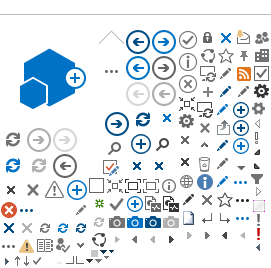In 2015, the Radiocommunication Assembly (RA) approved 36 new or revised ITU-R Resolutions inviting ITU-R to conduct studies on radiocommunication matters, including:
The ITU-R Study Groups developed 23 new or revised recommendations, 27 new or revised reports, and one new Handbook, including:
The Radiocommunication Advisory Group (RAG) held its annual meeting to review the priorities and strategies adopted in the Sector, provide guidance for the work of the Study Groups and recommend measures to foster cooperation and coordination with other organizations and with the other ITU Sectors. The outputs of the RAG included:
[15] PP Res. 136; Res. ITU-R 55; WSIS AL C2, C7; SDG Targets 1.5, 2.4, 9.C, 11.5, 11.b, 13.1
[16] Res. ITU-R 60-1; WSIS AL C2, C3, C7; SDG Targets 1.5, 2.4, 3.9, 7.3, 11.5, 11.b, 13.1, 13.3, 13.b, 14.1, 14.2
[17] PP Res.137, 139, 197, 200, and 203; Res. ITU-R 65; WSIS AL C2, C3, C7; SDG Targets 1.4, 3.8, 4.2, 4.3, 4.7, 5.b, 8.1, 8.2, 9.1, 9.3, 9.c, 10.2, 11.2, 13.1, 13.3, 16.7, 16.10
[18] PP Res. 80 and 175; Res. ITU-R 67; WSIS AL C2, C4; SDG Targets 10.2, 11.2, 11.5, 11.B, 4.5, 4.A, 8.5
[19] PP Res. 80; Res. ITU-R 68; WSIS AL C6; SDG Target 17.6
[20] PP Res. 30, 34, 80, 135, 137, 139, 178, and 203; Res. ITU-R 69; WSIS AL C2; SDG Targets 9.C, 17.6
[21] Res. ITU-R 5-7; WSIS AL C2; SDG Targets 3.d, 4.7, 5.b, 9.c, 10.2, 11.4, 13.1, 16.7, 16.10
[22] Res. ITU-R 5-7; WSIS AL C2; SDG Target 9.c
[23] Res. ITU-R 5-7; Res. 238 (WRC-15); WSIS AL C2; SDG Target 9.c
[24] Res. ITU-R 5-7; WSIS AL C2; SDG Targets 7.b, 9.c, 11.6, 11.b
[25] Res. ITU-R 5-7; WSIS AL C2; SDG Targets 9.c, 11.2, 11.5
[26] Res. ITU-R 5-7; WSIS AL C2; SDG Targets 9.c, 11.2
[27] Art. 11A of the CV, Res. ITU-R 52; WSIS AL C2; SDG Target 9.c
